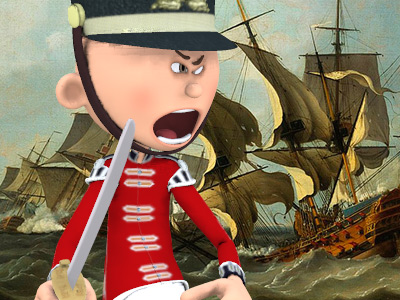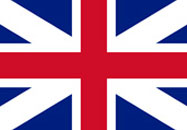Seven Years' War (1756-1763)
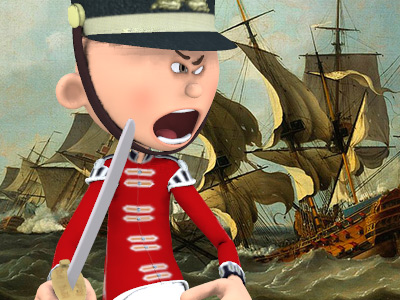
Colonies
The colonial conflict mainly between France and Britain took place in India, North America, Europe, the Caribbean isles, the Philippines, and coastal Africa. Over the course of the war, Great Britain gained enormous areas of land and influence at the expense of the French The Kingdom of France is the historiographical name or umbrella term given to various political entities of France in the medieval and early modern period. It was one of the most powerful states in Europe since the High Middle Ages. It was also an early colonial power, with possessions around the world. Colonial conflicts with Great Britain led to the loss of much of its North American holdings by 1763. The Kingdom of France adopted a written constitution in 1791, but the Kingdom was abolished a year later and replaced with the First French Republic.. Great Britain
The Kingdom of France is the historiographical name or umbrella term given to various political entities of France in the medieval and early modern period. It was one of the most powerful states in Europe since the High Middle Ages. It was also an early colonial power, with possessions around the world. Colonial conflicts with Great Britain led to the loss of much of its North American holdings by 1763. The Kingdom of France adopted a written constitution in 1791, but the Kingdom was abolished a year later and replaced with the First French Republic.. Great Britain The Kingdom of Great Britain was a sovereign country in Western Europe from 1 May 1707 to the end of 31 December 1800. The state was created by the 1706 Treaty of Union and ratified by the Acts of Union 1707, which united the kingdoms of England (which included Wales) and Scotland to form a single kingdom encompassing the whole island of Great Britain and its outlying islands, with the exception of the Isle of Man and the Channel Islands. lost Minorca in the Mediterranean to the French in 1756 but captured the French colonies in Senegal in 1758. The British Royal Navy took the French sugar colonies of Guadeloupe in 1759 and Martinique in 1762 as well as the Spanish cities of Havana in Cuba, and Manila in the Philippines, both prominent Spanish
The Kingdom of Great Britain was a sovereign country in Western Europe from 1 May 1707 to the end of 31 December 1800. The state was created by the 1706 Treaty of Union and ratified by the Acts of Union 1707, which united the kingdoms of England (which included Wales) and Scotland to form a single kingdom encompassing the whole island of Great Britain and its outlying islands, with the exception of the Isle of Man and the Channel Islands. lost Minorca in the Mediterranean to the French in 1756 but captured the French colonies in Senegal in 1758. The British Royal Navy took the French sugar colonies of Guadeloupe in 1759 and Martinique in 1762 as well as the Spanish cities of Havana in Cuba, and Manila in the Philippines, both prominent Spanish The Spanish Empire was a colonial empire governed by Spain and its predecessor states between 1492 and 1976. One of the largest empires in history, it was the first to usher the European Age of Discovery and achieve a global scale, controlling vast territory. It was one of the most powerful empires of the early modern period, reaching its maximum extent in the 18th century. colonial cities. However, expansion into the hinterlands of both cities met with stiff resistance. In the Philippines, the British were confined to Manila until their agreed upon withdrawal at the war's end.
The Spanish Empire was a colonial empire governed by Spain and its predecessor states between 1492 and 1976. One of the largest empires in history, it was the first to usher the European Age of Discovery and achieve a global scale, controlling vast territory. It was one of the most powerful empires of the early modern period, reaching its maximum extent in the 18th century. colonial cities. However, expansion into the hinterlands of both cities met with stiff resistance. In the Philippines, the British were confined to Manila until their agreed upon withdrawal at the war's end.
North America
During the war, the Seven Nations of Canada were allied with the French. These were Native Americans of the Laurentian valley—the Algonquin, the Abenaki, the Huron, and others. Although the Algonquin tribes and the Seven Nations were not directly concerned with the fate of the Ohio River Valley, they had been victims of the Iroquois Confederation. The Iroquois had encroached on Algonquin territory and pushed the Algonquins west beyond Lake Michigan. Therefore, the Algonquin and the Seven Nations were interested in fighting against the Iroquois. Throughout New England, New York, and the North-west Native American tribes formed differing alliances with the major belligerents. The Iroquois, dominant in what is now Upstate New York, sided with the British but did not play a large role in the war.
In 1756 and 1757 the French captured forts Oswego and William Henry from the British. The latter victory was marred when France's native allies broke the terms of capitulation and attacked the retreating British column, which was under French guard, slaughtering and scalping soldiers and taking captive many men, women and children while the French refused to protect their captives. French naval deployments in 1757 also successfully defended the key Fortress of Louisbourg on Cape Breton Island, securing the seaward approaches to Quebec.
British Prime Minister William Pitt's focus on the colonies for the 1758 campaign paid off with the taking of Louisbourg after French reinforcements were blocked by British naval victory in the Battle of Cartagena and in the successful capture of Fort Duquesne and Fort Frontenac. The British also continued the process of deporting the Acadian population with a wave of major operations against Île Saint-Jean (present-day Prince Edward Island), the St. John River valley, and the Petitcodiac River valley. The celebration of these successes was dampened by their embarrassing defeat in the Battle of Carillon (Ticonderoga), in which 4,000 French troops repulsed 16,000 British.
All of Britain's campaigns against New France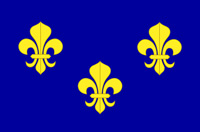 New France was the territory colonized by France in North America, beginning with the exploration of the Gulf of Saint Lawrence by Jacques Cartier in 1534 and ending with the cession of New France to Great Britain and Spain in 1763 under the Treaty of Paris. In the 16th century, the lands were used primarily to draw from the wealth of natural resources such as furs through trade with the various indigenous peoples. In the seventeenth century, successful settlements began in Acadia and in Quebec. succeeded in 1759, part of what became known as an Annus Mirabilis. Fort Niagara and Fort Carillon on 8 July 1758 fell to sizable British forces, cutting off French frontier forts further west. On 13 September 1759, following a three-month siege of Quebec, General James Wolfe defeated the French on the Plains of Abraham outside the city. The French staged a counteroffensive in the spring of 1760, with initial success at the Battle of Sainte-Foy, but they were unable to retake Quebec, due to British naval superiority following the battle of Neuville. The French forces retreated to Montreal, where on 8 September they surrendered to overwhelming British numerical superiority.
New France was the territory colonized by France in North America, beginning with the exploration of the Gulf of Saint Lawrence by Jacques Cartier in 1534 and ending with the cession of New France to Great Britain and Spain in 1763 under the Treaty of Paris. In the 16th century, the lands were used primarily to draw from the wealth of natural resources such as furs through trade with the various indigenous peoples. In the seventeenth century, successful settlements began in Acadia and in Quebec. succeeded in 1759, part of what became known as an Annus Mirabilis. Fort Niagara and Fort Carillon on 8 July 1758 fell to sizable British forces, cutting off French frontier forts further west. On 13 September 1759, following a three-month siege of Quebec, General James Wolfe defeated the French on the Plains of Abraham outside the city. The French staged a counteroffensive in the spring of 1760, with initial success at the Battle of Sainte-Foy, but they were unable to retake Quebec, due to British naval superiority following the battle of Neuville. The French forces retreated to Montreal, where on 8 September they surrendered to overwhelming British numerical superiority.
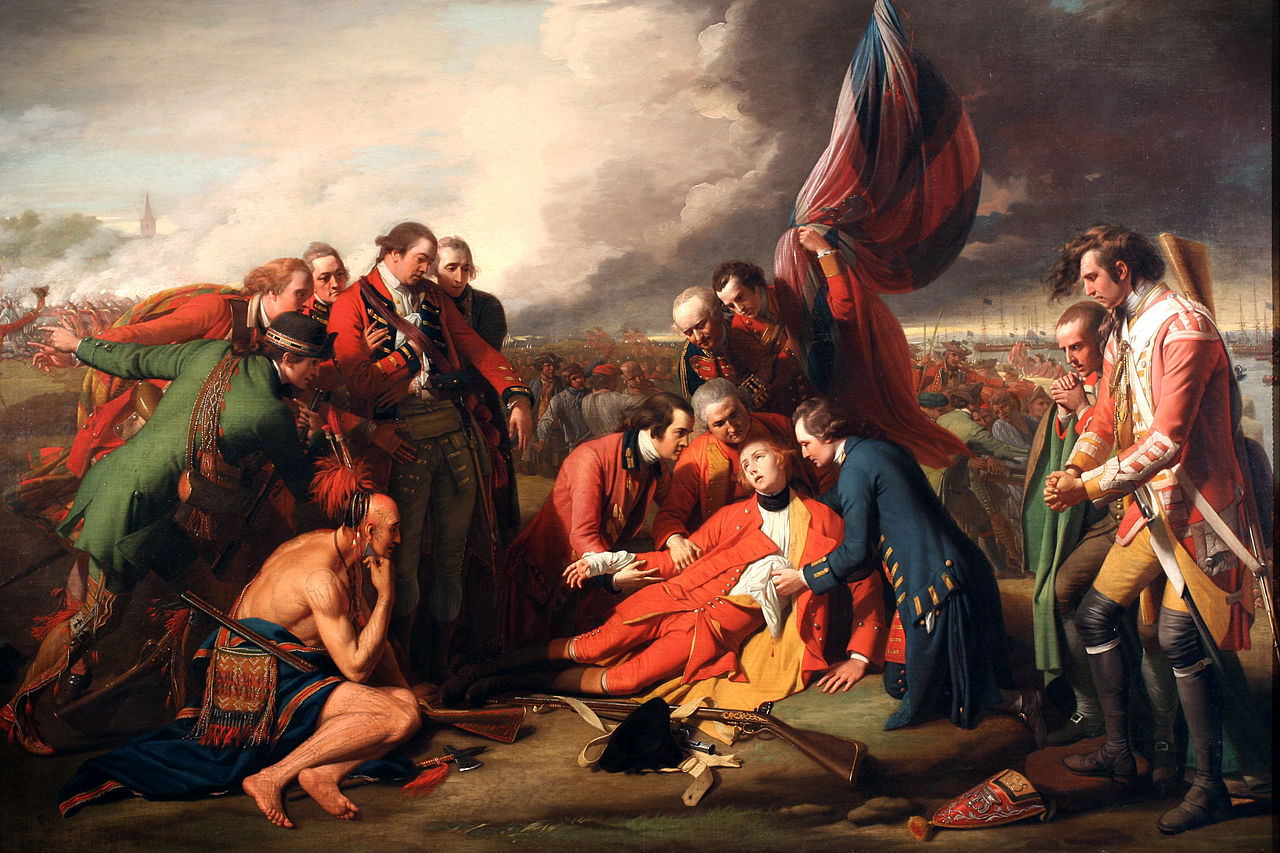
The Death of General Wolfe (1771), on the Plains of Abraham, near Quebec

The Death of General Wolfe (1771), on the Plains of Abraham, near Quebec
( Click image to enlarge)
Seeing French and Indian defeat, in 1760 the Seven Nations of Canada resigned from the war and negotiated the Treaty of Kahnawake with the British. Among its conditions was their unrestricted travel between Canada and New York, as the nations had extensive trade between Montreal and Albany as well as populations living throughout the area.
In 1762, towards the end of the war, French forces attacked St. John's, Newfoundland. If successful, the expedition would have strengthened France's hand at the negotiating table. Although they took St. John's and raided nearby settlements, the French forces were eventually defeated by British troops at the Battle of Signal Hill. This was the final battle of the war in North America, and it forced the French to surrender to Lieutenant Colonel William Amherst. The victorious British now controlled all of eastern North America.
South America
In South America (1763), the Portuguese conquered from Spain most of the Rio Negro valley, and repelled a Spanish attack on Mato Grosso (in the Guaporé River).
Between September 1762 and April 1763, Spanish forces led by don Pedro Antonio de Cevallos, Governor of Buenos Aires (and later first Viceroy of the Rio de la Plata) undertook a campaign against the Portuguese in Uruguay and South Brazil. The Spaniards conquered the Portuguese territories of Colonia do Sacramento and Rio Grande de São Pedro and forced the Portuguese to surrender and retreat.
Under the Treaty of Paris (1763), Spain had to return to Portugal the colony of Sacramento, while the vast and rich territory of the so-called “Continent of S. Peter” (the present day Brazilian state of Rio Grande do Sul) would be retaken from the Spanish army during the undeclared Hispano-Portuguese war of 1763–1777.
As consequence of the war the Valdivian Fort System, a Spanish defensive complex in southern Chile, was updated and reinforced from 1764 onwards. Other vulnerable localities of colonial Chile such as Chiloé Archipelago, Concepción, Juan Fernández Islands and Valparaíso were also made ready for an eventual English attack.
India
In India, the outbreak of the Seven Years' War in Europe renewed the long running conflict between the French and the British trading companies for influence. The war spread beyond Southern India and into Bengal, where British forces under Robert Clive recaptured Calcutta from the Nawab Siraj ud-Daulah, a French ally, and ousted him from his throne at the Battle of Plassey in 1757. In the same year, the British also captured the French settlement in Bengal at Chandernagar.
In the south, although the French captured Cuddalore, their siege of Madras failed, while the British commander Sir Eyre Coote decisively defeated the Comte de Lally at the Battle of Wandiwash in 1760 and overran the French territory of the Northern Circars. The French capital of Pondicherry fell to the British in 1761; together with the fall of the lesser French settlements of Karikal and Mahé this effectively eliminated French power in India.
West Africa
In 1758, at the urging of an American merchant, Thomas Cumming, Pitt dispatched an expedition to take the French settlement at Saint Louis. The British captured Senegal with ease in May 1758 and brought home large amounts of captured goods. This success convinced Pitt to launch two further expeditions to take the island of Gorée and the French trading post on the Gambia. The loss of these valuable colonies further weakened the French economy.
HISTORY
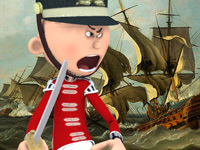
RESOURCES
This article uses material from the Wikipedia article "Seven Years' War", which is released under the Creative Commons Attribution-Share-Alike License 3.0.
© Stories Preschool. All Rights Reserved.
